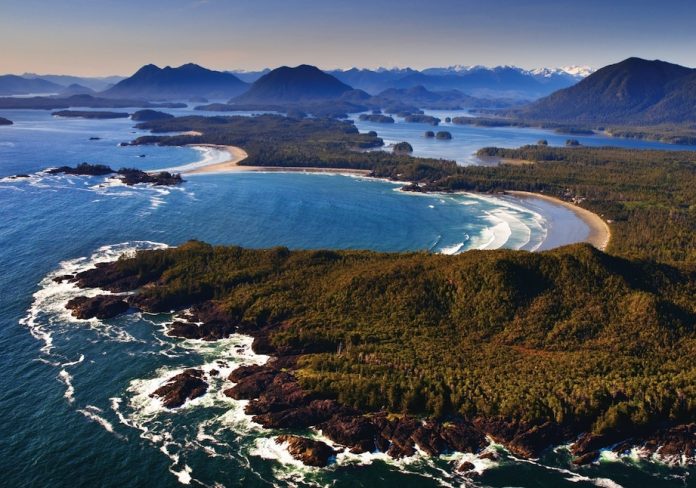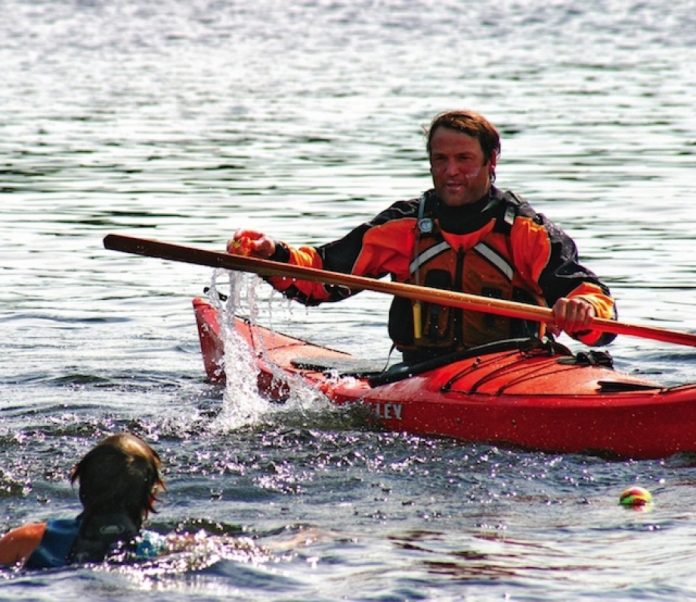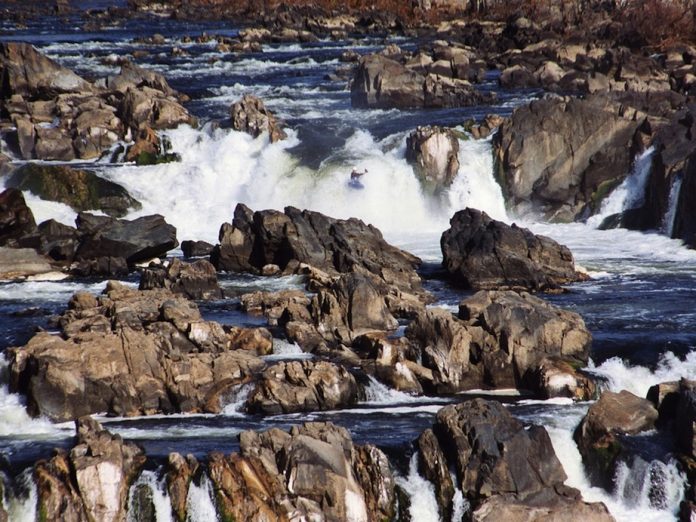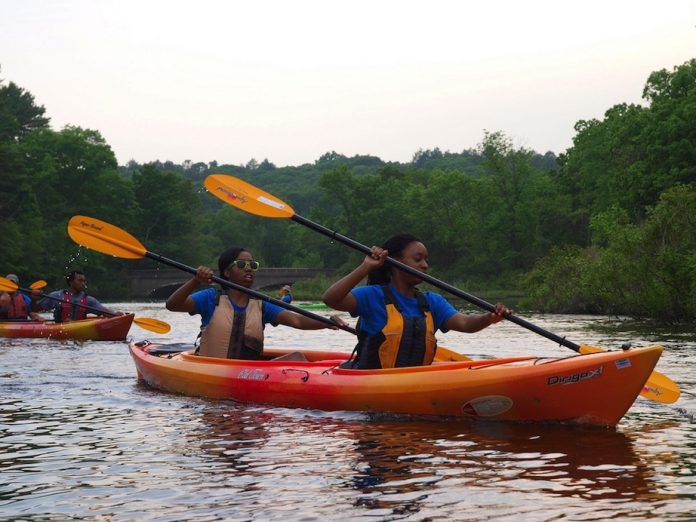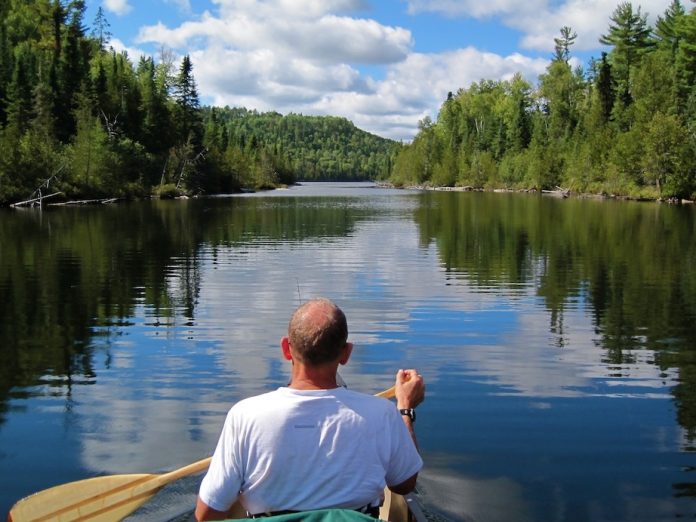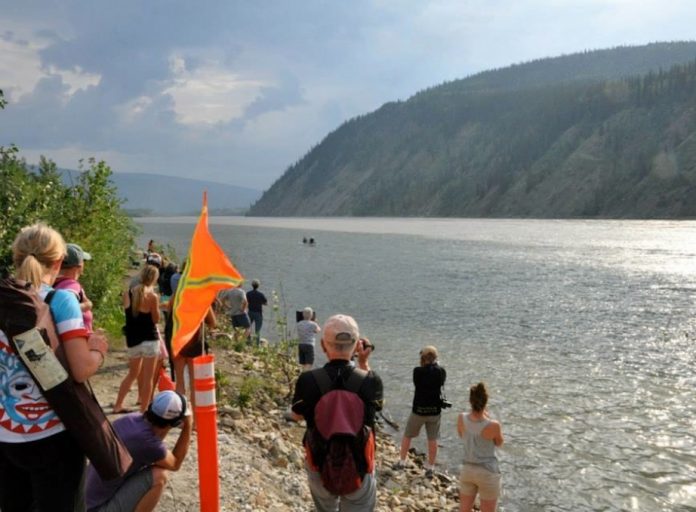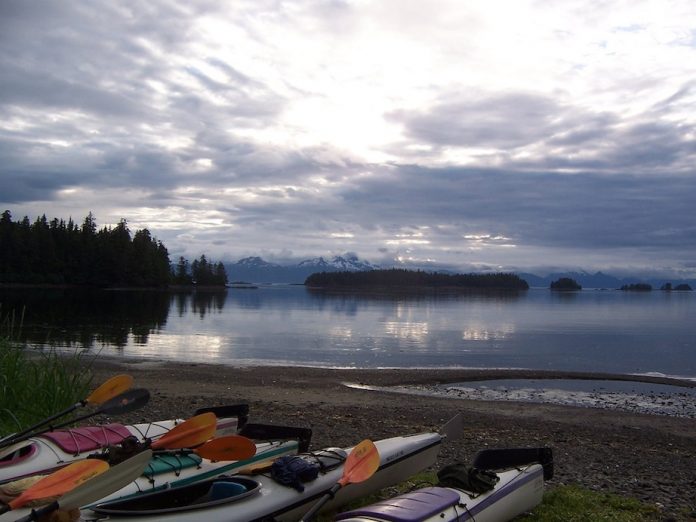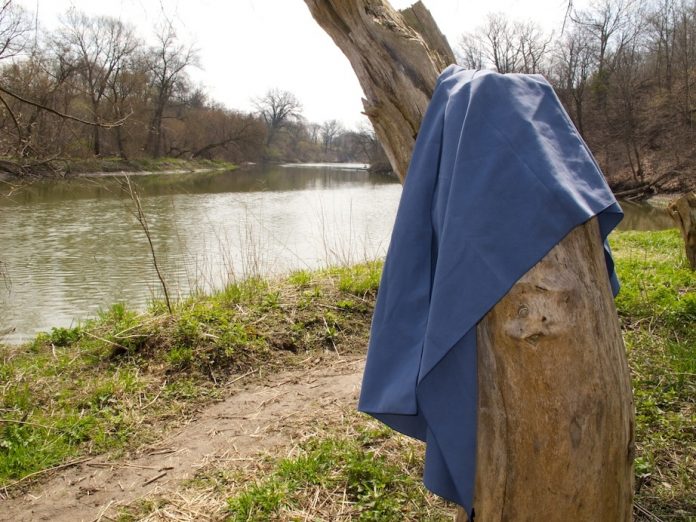For the first time since 2004, a tandem canoe team won the Yukon River Quest, the longest annual canoe and kayak race in the world. Team Round Side Down, consisting of paddlers Tim Lynch and Dave Lewis, passed the finish line after 45 hours and two minutes of paddling a Clipper WW2. The midnight-sun-fuelled race takes place each year on the Yukon River, along the 715 kilometers (444 miles) between Whitehorse and Dawson City in the Yukon.
Out of the 62 teams that started the race, 49 finished. There were 13 scratches—one at the end of Lake Laberge, 11 at Carmacks and one at Minto. Race officials noted that 50-kilometer long Lake Laberge was very calm for second straight year and that the river was high, but also say that these conditions did not result in faster times. No records were broken for the first time in many years. The uncharacteristically warm temperatures likely slowed teams, as well as thunder and lightning and smoke from forest fires, they added.
Though there were no major incidents, two teams overturned in the infamous Fiver Finger Rapids.
Race results below. To enter the 2014 Yukon River Quest, go to www.yukonriverquest.com.
Solo Classes
Open C1:
#11 Wun-Num-Nut – Jeff Brainard, Ontario (49:36:34)
#8 Eco Challenge Japan Hiro – Hiromune Imai, Japan (68:34:31)
Women K1:
1- #59 Super Maryo – Mary Obstfeld, Alberta (64:24:54)
Men K1
1. #28 ECOFOR Consulting – Stephen Mooney, Yukon (49:14:43)
1. #7 Dharma Bum – Gus Oliveira, British Columbia (49:14:43)
3. #2 The Black Sheep – Darren Williams, United Kingdom (50:20:23)
Overall Solo
1. #28 ECOFOR Consulting – Stephen Mooney, Yukon (49:14:43)
1. #7 Dharma Bum – Gus Oliveira, British Columbia (49:14:43)
3. #2 The Black Sheep – Darren Williams, United Kingdom (50:20:23)
Tandem Canoe Class
Women C2
#66 Sisu – Melissa Vaja / Tammy Stoneman, Teslin, Yukon (64:22:51)
#3 Bear(ly) Scared – Sarah Wallis / Esther Wheeler, United Kingdom (64:24:54)
Mixed C2
#44 Currently Confused Still – Steve Ramsay / Karla Ramsay, Manitoba (50:42:22)
#54 Towing the Line – Pauline Frost / Dennis Fosseneuve, Yukon/Ontario(51:04:57)
#62 Northern Allies – Patrick Poulin / Natalie Vachon, Yukon / Quebec (52:21:21)
Men C2
#19 Round Side Down – Tim Lynch / Dave Lewis, Yukon/ Nova Scotia (45:02:00)
#53 Looking for 40 Creek – Gaetan Plourde / Ian Mockett, Ontario (45:16:34)
#57 Kelowna Kanoers – Dylan Switzer / David Mcinerney, BC (48:32:07)
Overall C2
#19 Round Side Down – Tim Lynch / Dave Lewis, Yukon/ Nova Scotia (45:02:00)
#53 Looking for 40 Creek – Gaetan Plourde / Ian Mockett, Ontario (45:16:34)
#57 Kelowna Kanoers – Dylan Switzer / David Mcinerney, BC (48:32:07)
Tandem Kayak
Men K2
#20 On the Way to Maine – Tom Simmat / Urs Mader, Australia (45:26:27)
#30 Longdon – Allan Jackson / Callam Urquhart, Great Britain (53:14:01)
#29 El Gamil – Paul Billings / Graham Groves, United Kingdom (53:14:02)
Overall K2
#20 On the Way to Maine – Tom Simmat / Urs Mader, Australia (45:26:27)
#30 Longdon – Allan Jackson / Callam Urquhart, Great Britain (53:14:01)
#29 El Gamil – Paul Billings / Graham Groves, United Kingdom (53:14:02)
Voyageur Canoes
Women Voyageur
#58 Currently Available, Yukon (50:07:03)
#46 Paddlers Abreast, Yukon (51:05:43)
#61 300 Years of Wisdom, Yukon (52:39:12)
Mixed Voyageur
#16 Your Worst Nightmare Dream Team, USA (45:28:28)
#43 Passing Through, New York (46:25:10)
#27 Outward Bound Canada, (50:20:18)
Open Voyageur
# 38 Interserve H4H2, United Kingdom (49:28:23)
#35 Steelbacks, United Kingdom (51:53:10)
#26 Interserve H4H1, United Kingdom (53:02:12)
Overall Voyageur
#16 Your Worst Nightmare Dream Team, USA (45:28:28)
#43 Passing Through, New York (46:25:10)
#58 Currently Available, Yukon (50:07:03)
Special Awards
Top All Yukon Canoe – #58 Currently Available –Yukon women’s voyageur team (cash)
Top All Yukon Kayak – #28 ECOFOR Consulting – Stephen Mooney of Whitehorse (cash)
Top First Nation Team – #54 Towing the Line – Pauline Frost of Whitehorse, Yukon and Dennis Fosseneuve of Subbury, Ontario (cash)




